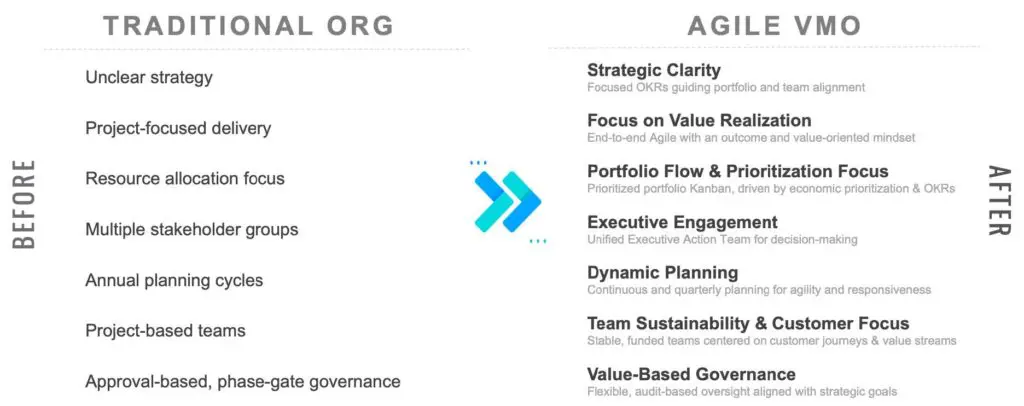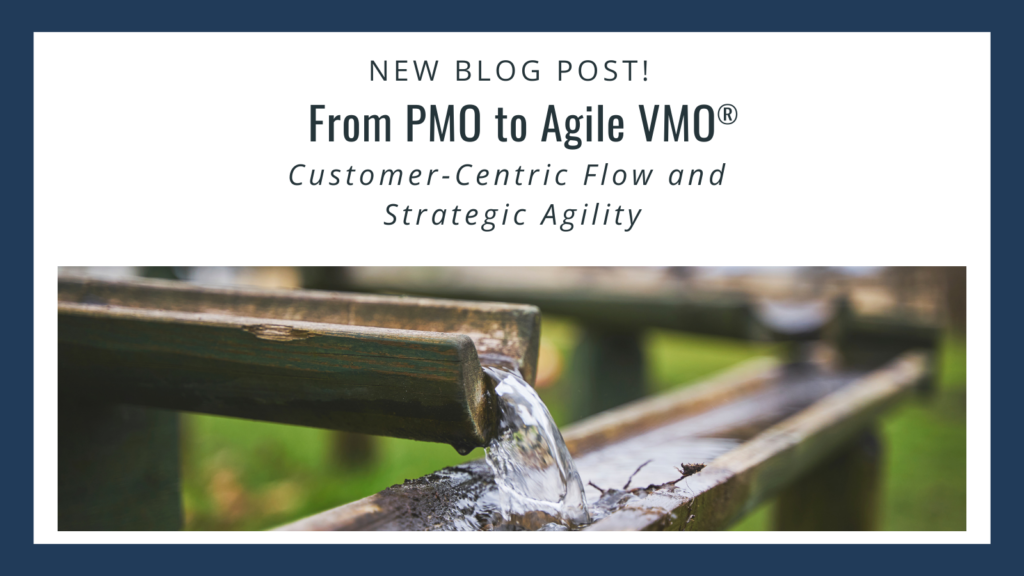Transitioning from a traditional Project Management Office (PMO) to an Agile Value Management Office (Agile VMO) isn’t just a change in terminology—it’s a paradigm shift in how organizations approach strategy, execution, and governance. While traditional PMOs have long been the standard for managing projects, they often struggle to keep pace with the dynamic and fast-changing demands of today’s business environment. The Agile VMO offers a modern governance model focused on value delivery, strategic alignment, and adaptive planning.
The following crosswalk illustrates the key differences between these two approaches, showing how organizations can shift their focus from projects to products, from rigid plans to adaptable strategies, and from outputs to outcomes.

Key Observations
1. Strategic Alignment
In traditional organizations, strategy often gets diluted or lost in translation as teams work on disconnected projects. Agile VMOs address this gap through Objectives and Key Results (OKRs), aligning every team, initiative, and deliverable with clear, measurable outcomes tied directly to strategic goals.
2. Value-Driven Mindset
Project success in traditional organizations is typically measured by completing tasks on time and within budget. However, these metrics rarely reflect real business value or customer impact. Agile VMOs shift this focus to value realization, prioritizing outcomes that genuinely move the needle for customers and stakeholders.
3. Continuous and Dynamic Planning
Static annual planning cycles are simply too rigid for today’s environment. Agile VMOs embrace continuous planning with quarterly adjustments, enabling organizations to pivot quickly in response to new opportunities or challenges without being locked into outdated plans.
4. Sustainable, Customer-Centric Teams
Temporary, project-based teams in traditional organizations often lead to knowledge loss and team instability. Agile VMOs foster stable, long-lived teams aligned with customer value streams, ensuring continuity, accountability, and a deeper understanding of customer needs.
5. Value-Based Governance
Traditional governance often emphasizes approvals and compliance at the cost of agility. Agile VMOs adopt audit-based oversight, balancing accountability with flexibility to ensure that governance accelerates value delivery rather than hindering it.
Why the Agile VMO Matters
The shift from traditional organization structures to Agile VMO frameworks is not merely operational—it’s transformational. At its core, the Agile VMO is about:
- Adaptability: Responding quickly to market changes and emerging opportunities.
- Alignment: Ensuring every effort aligns with strategic goals and OKRs.
- Value Focus: Prioritizing outcomes and customer impact over activity and outputs.
The Agile VMO Impact:
- Faster, more informed decision-making.
- Improved alignment between strategic goals and execution.
- Sustainable, empowered teams focused on value streams.
- Governance that enables progress rather than stifles it.
Call to Action
The transition to an Agile Value Management approach is no longer optional—it’s essential for organizations aiming to thrive in a volatile, uncertain, and complex world.
It’s time to move away from rigid plans, isolated projects, and disconnected governance models. Instead, embrace a value-driven, strategically aligned, and dynamically governed approach through the Agile VMO.
Are you ready to make the shift?
The future of strategic agility starts with a focus on value and adaptability.
For deeper insights and a detailed roadmap, explore our book, “From PMO to VMO: Managing for Value Delivery.”

